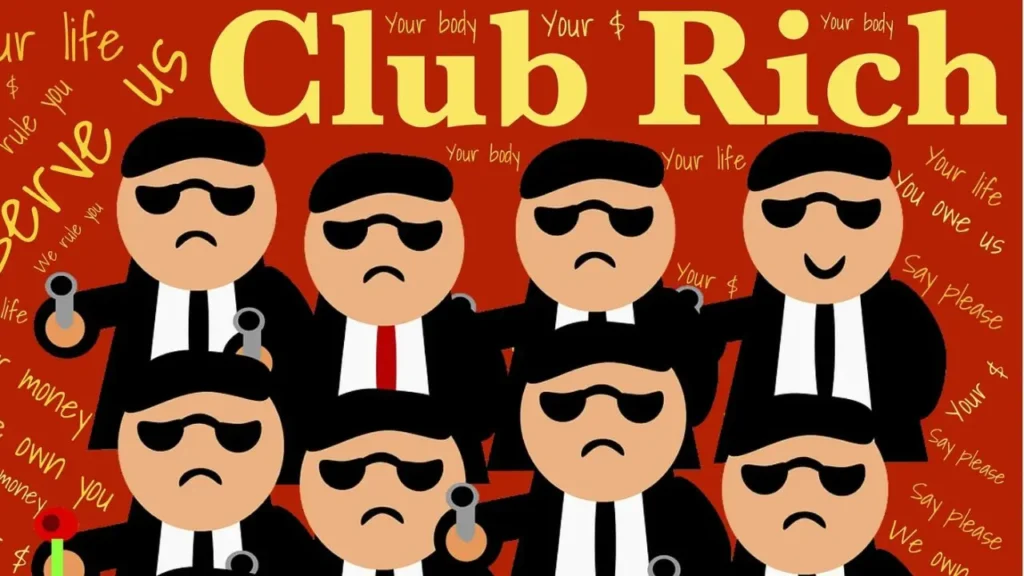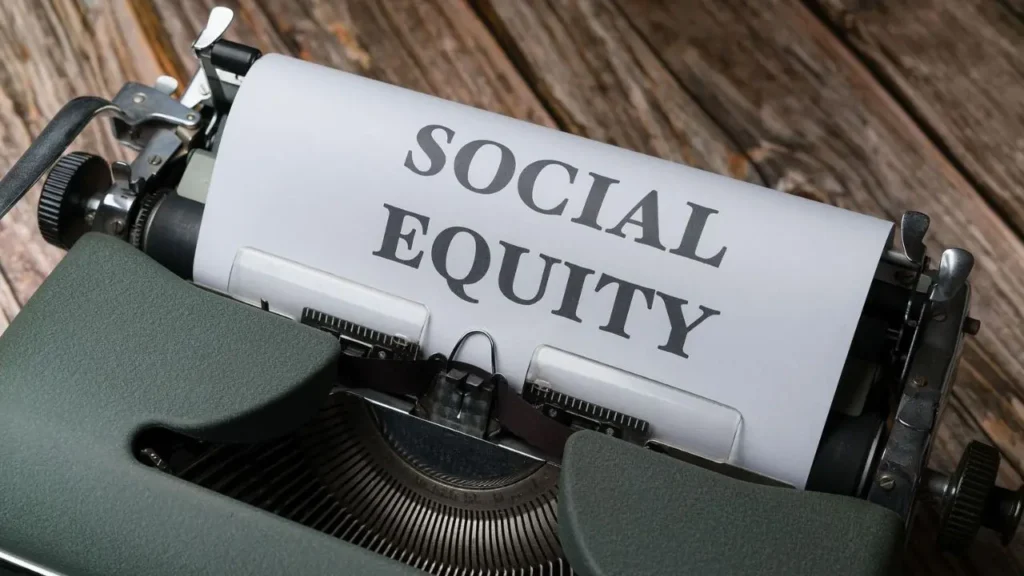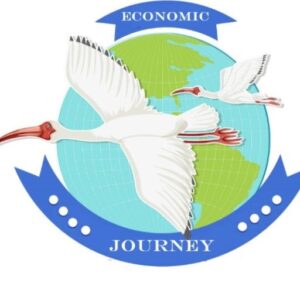
Introduction
Income and wealth inequality refers to the differences in income between individuals, households, social groups, or geographical areas (countries, etc.). These monetary inequalities relate to income flows (monthly, annual, etc.) and wealth stock.
In fact, income is defined as the disposable income of households in a given year. It consists of wage income, self-employment income, and capital income, as well as government cash transfers, with wages and labor income accounting for three-quarters of the income of the working-age population.
In general, income inequality measures the differences infinancial flowthat we distinguish inequality of wealth which is differences in stock (wealth amassed), these two inequalities constitute the economic inequality.
Thus, the income and wealth inequality between different groups in a society has long been recognized as an obstacle to sustainable development, as it can hinder poverty reduction, slow economic growth, limit access to economic and educational opportunities for individuals and reduce social cohesion within a country.
I- The state of income and wealth inequality in the world
In principle, high income and wealth inequality are more common in low- and middle-income countries, as well as in countries experiencing political fragility or affected by conflict.
Yet inequalities between rich and poor have jumped in thirty years to reach a record level in most countries of the North as well as those of the South, and this, at a time when humanity has never produced so much wealth.
Moreover, income and wealth inequality are mainly linked to individuals’ professional situation or the assets they possess. The impact of other factors can be highlighted, such as, for example, the level of education, gender, social or geographical origin.
Typically, much of the debate about income and wealth inequality focuses on the rising incomes and wealth of the wealthiest 1% or 10% of individuals.
It should be noted that overall wealth inequality is greater than income inequality. The richest 1% owns 38% of the wealth, more than the bottom 90% of the population. In other words, 80 million people concentrate much more wealth than 7.2 billion individuals, which means that the richest 10% concentrate three-quarters of the wealth.
In general, the global situation in terms of disparity is characterized by :
- A world of inequality;
- Ever more concentrated wealth;
- Widening inequality gap;
- Women, racialized people and people in precarious situations confined to social reproduction and devalued jobs.
1- Measurement of inequalities
Economists and sociologists have varied and complementary methods for measuring and analyzing inequalities.
Thus, one of the most commonly used indicators is the Gini index and more recently the Palma indicator.
A- Gini index
The Gini index is a synthetic indicator used to reflect the level of inequality for a variable and for a given population. It varies between 0 (perfect equality where everyone receives the same income) and 1 (extreme inequality where a single individual receives the entire income of the country). Between 0 and 1, inequality is greater the higher the Gini index.
B- Palma Indicator
The Palma indicator is a form of inter-decile ratio that measures the ratio between the income of the richest 10% and that of the poorest 40%: widely used for the study of developing countries, it allows us to know whether the growth of the economy benefits the entire population or only an elite, and to study the share of the very rich, we also use the proportion of income received by the wealthiest 1% or 0.1%.
In this context, and at a time when humanity has never produced so much wealth, research has shown that inequalities between rich and poor have jumped in thirty years to reach a record level in most countries of the North as well as those of the South, such that the least well-off 50% hold barely 2% of global wealth at a time when the richest 10% of the planet capture 52% of global income.
At the US level The richest 1% owns 20% of the country’s income and 33% of its wealth., for more illustration at New York, for example, has almost 400,000 millionaires, it is estimated that 21% of this population are below the poverty line, and that 1/5 of New York children have difficulty feeding themselves.
2- Historical evolution of inequalities
Generally, we can propose a chronology of the most important phases in the evolution of income and wealth inequality in the world, which is as follows :
A- Industrial Revolution
A period characterized by the enrichment of capital holders and the increase in the poor working population, which led to the widening of economic inequalities, a situation which allowed the development of socialism and the emergence of workers’ movements and trade unions.
B- Since the 1930s
During this phase, in the United States, the income tax rate for the poorest 50% rose from 8% to around 25%, and the same trend is observed if we extend this to the poorest 90%, which exacerbated inequality.
C- Between 1945-1980
A period celebrated by the thirty glorious years which saw high growth rates in industrialized countries, coupled with the establishment of welfare state systems as well as a more equitable sharing of added value which led to a significant reduction in inequalities.
D- Since 1980
It was the era of financial deregulation and trade globalization, during which unemployment and the difficulties of public finances weighed on the incomes of the working and middle classes, which resulted in the rise of inequalities once again.
E- From the 2000s
At this time, especially in the United States, inequality reached record levels comparable to those of the early 20th century, largely due to the process of financialization of the economy.
F- The year 2011
Since 2011, China has become the world’s second-largest economy. Despite its rapid economic growth, which has lifted 850 million people out of poverty, inequality within the Chinese population is growing sharply.
Generally speaking, what contributes to the reduction of inequalities is the application of a progressive income tax rate, which was the case until the 1970s, but since then, all income brackets are taxed at very similar rates. A general trend that concerns both Western countries and countries in the South
3- Inequality and social reproduction
In principle, income and wealth inequality hinders economic development because the transfer of resources to the rich limits economic growth, as, unlike low- and middle-income people who spend, the rich generally resort to saving, which leads to the withdrawal of financial resources from the economic circuit and, of course, has a negative impact on the fall in demand.
Moreover, nations with higher rates of income and wealth inequality have lower levels of intergenerational mobility, and parental income actually becomes a more important predictor of children’s future income.
Indeed, income disparity is the source of several ills for society, such as :
- The rise in crime ;
- The reduction in the cost of living ;
- The increase in difficulties ;
- Limiting access to economic and educational opportunities for individuals ;
- Obstacle to poverty reduction ;
- The appearance of mental problems ;
- Reduction of social cohesion.

II- Structural causes of income and wealth inequality
In principle, the phenomenon of inequalities is not inevitable but is the result of a political choice which results in a balance of power which contributes to their production and reproduction.
Thus, several factors can be presented as the main causes of their exacerbation :
1- Neoliberal capitalism
It is an economic system that has reigned supreme over the global economy since the 1990s, and which has the particularity of ever-increasing inequality. It enriches a tiny minority of people to obscene levels while leaving the majority of the population in ever-increasing poverty.
Moreover, neoliberal doctrine considers social inequality as the sacrifice necessary to ensure economic efficiency and political freedom.
2- Institutional evolution
This has resulted in the adoption of deregulation policies and the emergence of non-standard or societal forms of employment, i.e. part-time, temporary or self-employed jobs, mostly held by young and low-skilled people, which are generally less well paid than standard jobs.
3- Outsourcing of labor
Companies generally want to make as much profit as possible, so many of them outsource jobs abroad, to countries where labor costs are low, so that production can be done at a much lower price. Faced with this job shortage, local workers are forced to accept lower wages than what they were previously earning.
4- Technological advances
Although technological advancements are a positive addition to the workplace, they can actually be detrimental to workers.
On the one hand, the rebots replace the workers in the factory, which puts the workers in two scenarios: either get another position within the factory, or be fired because their services are no longer needed.
On the other hand, rapid technological progress has often provided higher-skilled workers with higher earnings than lower-skilled workers, thereby affecting the distribution of labor income.
5- The political choice
By adopting a liberal ideology or resorting to austerity policies, the State can withdraw from the traditional areas of social protection and the well-being of its population, which results in :
- Gradual reduction in the rate of compensation for low-wage workers who are unemployed ;
- Relaxation of employment protection legislation, applicable in particular to temporary contract holders ;
- Minimum wages fall relative to median wages ;
- Decline in unionization rate ;
- Decline in unemployment benefit replacement rates ;
- Reduction of contributions weighing on the category of low-skilled workers.
6- The financialization of the economy
The financialization of the economy and the concentration of capital, leads to the emergence of a very rich category of population which increasingly exacerbates income and wealth inequality in both developed and developing economies.
7- Education
Typically, students from disadvantaged backgrounds attend lower-quality schools, making them less likely to attend university. As a result, future labor productivity may be lower.
In fact, people with college education earn very high salaries compared to people who only have a high school diploma during their lifetime. In this context, Americans with college education earn 84% more than others. This has a negative impact on the american income distribution.
8- Inflation
People with a variety of income sources (stocks, bonds, land, or business) are less affected by inflation than those whose sole source of income is wages. This is because wages tend to stay the same or not increase as much as inflation, unlike other income sources, making them more vulnerable.
It should be noted that in the United States, wages and labor income represent three-quarters of the income of the working-age population, which is increasing more and more american income inequality.
9- Lower taxes
Trickle-down theory advocates reducing tax burdens on the wealthy and large corporations on the grounds that their enrichment contributes to economic activity, either through consumption or investment, thereby allowing the entire population to benefit from the fruits of economic growth. This reasoning has been largely refuted by past experience.
10- Recommendations of international institutions
International institutions such as the IMF and the World Bank are encouraging governments, particularly those in the Global South, to reduce corporate taxes while simultaneously increasing value-added tax. This tax, which is levied equally on everyone, affects the poorest proportionately more because they consume their entire income, unfairly increasing the cost of living burden on this disadvantaged segment of the population.
11- Privatization
The state’s retreat will result in increased private debt, as those previously supported by the state must compensate for its withdrawal with debt. Thus, in the countries of the South, microcredit, which is sought in most cases by women, plunges them into vicious circles of debt with rates that can range from 20% to 200%, and unacceptable pressures when they can no longer pay.
12- Household structure
Household structures have changed profoundly. There are more single people today, with or without children, than ever before. As a result, smaller households benefit less from pooling resources and sharing expenses.
Conclusion
Income and wealth inequality has become a threat to the global economy and to the lives of millions of people around the world, as the income gap The growing gap between rich and poor does not only affect rich countries.
So, the redistribution of wealth, both within and between countries, of wealth and in particular of income and wealth, has today become an imperative necessity.

Hi, how have you been lately?
Thank you I am fine
Turkey tour packages Turkey tour packages are professionally organized. The wine tasting in Şirince and sunset in Bodrum were magical. https://secureheating.co.uk/?p=22659
真免费!价值万元资源,不要一分钱,网址:https://www.53278.xyz/
Your point of view caught my eye and was very interesting. Thanks. I have a question for you. https://www.binance.info/fr/register?ref=T7KCZASX
Thank you for your sharing. I am worried that I lack creative ideas. It is your article that makes me full of hope. Thank you. But, I have a question, can you help me?
Thank you
Thank you for your sharing. I am worried that I lack creative ideas. It is your article that makes me full of hope. Thank you. But, I have a question, can you help me?
Thanks